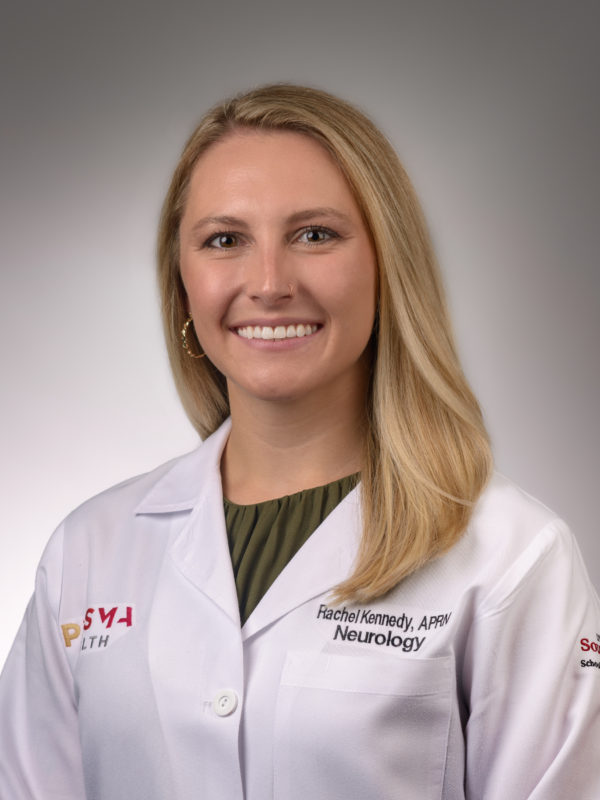Why young women are at a higher risk for stroke
Most strokes occur in people 50 and older, but over the last few decades, strokes have increased among young people by 40%, and most strokes are happening in women. According to the National Institute of Neurological Disorders and Stroke, one in 5,000 women between the ages of 15 and 49 will suffer a stroke each year.
Neurology nurse practitioner Rachel Kennedy explained why young women are at a higher risk for stroke and how you can prevent a stroke from happening to you.
Young women are at a higher risk for stroke. Here’s why.
Young women carry a higher risk than men because of hormones. Estrogen, specifically, can cause clotting in your blood. It doesn’t have anything to do with a woman’s normal amount of estrogen, but instead comes with either pregnancy or when you take a medication that increases your estrogen levels, like birth control and hormone replacement therapy.
By itself, estrogen in young women usually isn’t enough to cause a stroke. The problem comes when there are other risk factors involved.
These risk factors can include:
- Elevated blood pressure levels.
- Elevated cholesterol levels.
- Heart disease.
- Diabetes.
- Smoking.
- Conditions related to pregnancy such as gestational diabetes or preeclampsia.
- History of clotting disorders such as lupus or sickle cell disorder.
- Migraines with aura.
- COVID-19 infection.
Women who are higher risk can still safely use birth control, however, by using options such as pills, IUDs or implants that only contain progestin.
Stroke is also more common in African American women, which can be attributed to multiple factors, one being that black adults are predisposed to developing high blood pressure earlier in life and it tends to be more severe.
Is stroke during pregnancy common?
“Stroke during pregnancy is not common, but it does happen,” Kennedy said. “The risk of stroke during pregnancy is actually higher than the stroke risk with birth control.”
Strokes typically happen either during delivery or postpartum and usually among women who have other stroke risk factors. These risk factors can include conditions that occur only during pregnancy, a significant one being new onset high blood pressure, also known as preeclampsia and eclampsia. Preeclampsia is new onset high blood pressure during pregnancy coupled with protein in the urine or organ damage, typically the kidneys. Eclampsia is when a woman has a seizure in addition to that.
“Women can also have underlying genetic risk factors they might not know about until they get pregnant,” Kennedy said. “If a woman has had a blood clot in her leg or multiple miscarriages, their doctor might recommend genetic testing to look for anything that could predispose them to stroke during pregnancy.”
How can young women prevent a stroke?
One of the most important steps you can take in preventing a stroke is to know your family history, especially regarding diseases that cause blood clots.
Other ways you can prevent a stroke include:
- Get an annual physical exam.
- Know your numbers, such as cholesterol, blood pressure and glucose.
- Avoid smoking.
- Exercise – walking a minimum of 30 minutes per day for three to five times a week.
- Watch your weight and eat a healthy diet, such as the Mediterranean diet which is lower in fat and higher in fruits and vegetables.
- Be aware of any signs or symptoms of stroke.
“There are things we can’t control, but there are many things we can,” Kennedy said. “Focus on those modifiable risk factors.”
What are the signs of a stroke?
Common stroke symptoms include:
- Weakness, often involving one side of the body. It can be subtle, like clumsiness in the hand, or your whole arm could be quickly completely flaccid with no movement.
- Facial drooping around the side of the mouth.
- Change in sensation. This often involves decreased sensation over the face, arm or leg. Again, it can be subtle, almost like you’ve had a shot of Novocain, or it can be a complete sensory loss where you can pinch your arm and not feel it.
- Change in vision, whether it’s suddenly seeing double, having blurry vision or no vision at all.
- Speech difficulty. There might be a little bit of slurring of words, or you can have a change in your ability to speak at all. This can present as difficulty speaking or difficulty understanding speech. This can also show up as someone who suddenly can’t understand what’s happening around them.
- Dizziness or balance problems that come on suddenly.
Typically, stroke symptoms come on suddenly. Some patients have a stuttering onset of various symptoms, but each symptom is sudden.
“Many women hesitate because they think it’s nothing, but don’t wait,” said Kennedy. “If you think something is off, call 911 immediately. I would rather it be nothing than miss that window when we can intervene and make a huge difference.”
Prisma Health Stroke Center
Time is critical when it comes to a stroke. Our team is on-site 24/7, with a multidisciplinary program of care and leading-edge approach for stroke patients.
Learn More

